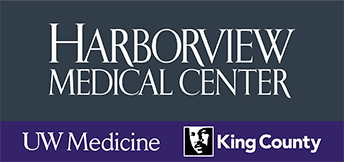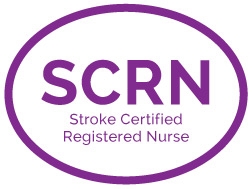Stroke Certified Registered Nurse Course
Date: October 19th, 2023 from 7:00 -16:00.
Register by: October 16th, 2023.
Location: Webinar
CE credits: 7.25 Nursing CE credits available upon course completion
Introduction
The course is sponsored annually by Harborview Medical Center & Harborview Comprehensive Stroke Center. Harborview Medical Center is the designated Level 1 Trauma Center in Washington and is TJC Comprehensive Stroke Center certified since 2013. Harborview serves the Washington, Alaska, Montana, and Idaho (WAMI) region.
This one day, web based series is designed to prepare nurses to successfully complete the SCRN exam as well as provide updated continuing education for nurses who require annual stroke education hours.
Nationally recognized speakers and a local expert in stroke care and education care will present topics pertinent to the care of the stroke patient including:
- Describe the Stroke Certified Registered Nurse Certification process.
- List the areas of content covered in the SCRN exam
- Describe the basic structures of the brain, including Cerebral vasculature.
- Discuss stroke pathophysiology
- Describe the association between basic brain anatomy and the clinical signs and symptoms of stroke.
- Discuss the basic principles of neuroplasticity.
- Identify individuals at risk for stroke.
- Describe the role and use of stroke assessment tools.
- Identify learning needs and appropriate teaching materials.
- Identify modifiable and nonmodifiable risk factors.
- Identify stroke prevention strategies based on clinical practice guidelines.
- Discuss the importance of rapid identification and intervention of the acute stroke patient.
- Identify the symptoms of stroke.
- Describe the initial care of the acute stroke patient.
- Recognize the implications of the various stroke scales.
- Discuss administration of thrombolytic and other mechanical interventions used in acute ischemic stroke treatment.
- Describe interventions for hemorrhagic stroke.
- Articulate a nursing plan of care for the management of the acute stroke patient.
- Describe radiologic studies used in the diagnosis and treatment of stroke.
- Identify the indications, procedures, and clinical implications for diagnostic tests for the stroke patient.
- Describe the laboratory tests used to diagnose and treat stroke.
- Describe nursing interventions related to specific Diagnostic exams.
- Describe and implement general acute stroke care and acute care specific to ischemic stroke, intracerebral hemorrhage, and subarachnoid hemorrhage.
- Collaborate with other healthcare teams, using a holistic approach to provide quality nursing care
- Identify disorders that commonly and uncommonly lead to stroke syndromes.
- Identify commonly used classes of medications for patients with stroke.
- Compare and contrast the indications for use of selected medications for stroke.
- Discuss the timing and duration of therapy for selected medications for patient with stroke.
- Discuss the dosage of specific medications based on their therapeutic indications.
- State a working definition of rehabilitation and restorative care concepts.
- List the typical levels of postacute rehabilitative/restorative care settings that may be available to the person who has had a stroke.
- Describe the roles of the interprofessional or interdisciplinary rehabilitation care team members.
- List techniques that rehabilitative and restorative care team members employ to minimize functional deficits.
- Describe the importance of developing a lifelong plan of care to optimize functional return for the person who has had a stroke.
- Discuss the latest innovative techniques that are employed in the continued quest for improved stroke care in postacute settings.
- Summarize the rationale for standardization of care for the stroke population.
- Identify protocols or pathways to care for the acute stroke population.
- Outline quality improvement technique to improve stroke outcomes.
- Discuss the application of quality improvement techniques.
- Identify criteria for stroke center certification.
Course Objectives (Partial List)
- Describe the association between basic brain anatomy and the clinical signs and symptoms of stroke.
- Identify stroke prevention strategies based on clinical practice guidelines.
- Describe and implement general acute stroke care and acute care specific to ischemic stroke, intracerebral hemorrhage, and subarachnoid hemorrhage.
- Compare and contrast the indications for use of selected medications for stroke.
Fees
Non UW Medicine Affiliates: $100 (from Allied Healthcare Professionals: $100)
UW Medicine Affiliates/Telestroke Partners
- Cascade Medical Center (Leavenworth)
- Confluence Health (Central Washington Hospital)
- Island Health (Anacortes)
- Lourdes Health
- PeaceHealth St. Joseph Medical Center (Bellingham)
- PeaceHealth Ketchikan Medical Center
- PeaceHealth United General Medical Center (Sedro Wooley)
- Snoqualmie Valley Hospital
- St. Joseph Regional Medical Center (Lewiston, ID)
- UWMC – Montlake
- UWMC – Northwest
- Trios Health
- Valley Medical Center
Sponsored by

